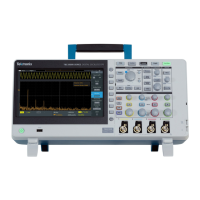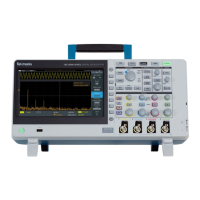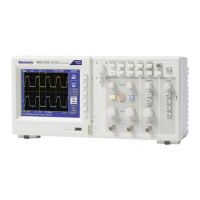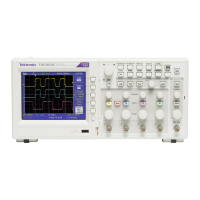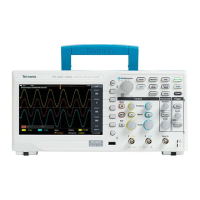About automatically generated file names
The oscilloscope automatically creates a numbered file name for the files that it
saves to the USB drive.
The naming convention is TEKXXXXX.<ext>, where:
■
XXXXX is an integer from 00000 to 99999
■
<.ext> is the file type (.PNG, .BMP, or .JPG for screen image files; .SET for
setup files; .ISF or .CSV for waveform files)
To create a new file name, the oscilloscope scans the USB drive to determine the
highest-numbered file name present for the file type being saved. The
oscilloscope then increments that number and uses it for the new file name. For
example, the first time you save a file, the oscilloscope creates the file name
TEK00000. The next time you save the same type of file, the new file is named
TEK00001.
Image setting and waveform file tips
■
If there are nonsequential jumps in the file numbering, such as TEK00001,
TEK00002, TEK00005, the oscilloscope uses the highest-numbered file as
the starting point for new file names (TEK00006 in this example).
■
If you select a different USB drive or folder location, the oscilloscope creates
the file number based on the files present in that USB drive or folder. For
example, if you select the save folder as /usb0/MyProject1, which contains
file TEK00006.png, the next saved .png file in that folder is named
TEK00007.png.
■
To determine the channel or waveform type (Math, FFT, Ref) of a saved
waveform file, open the waveform file (.CSV or .ISF) in a text editor. The
channel name or waveform type is at or near the top of the file structure.
Using the USB file utility functions
146 TBS2000B Series Oscilloscopes User Manual

